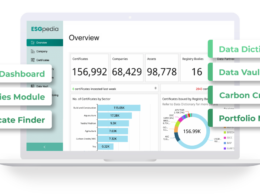Siemens Financial Services has launched the Decarbonisation Business Optimiser (DBO™), a cloud-based tool designed to simplify the complex process of decarbonising buildings and financing the transition to net-zero emissions. The DBO is a free digital platform that helps companies identify efficient strategies for reducing their carbon footprints, removing knowledge barriers that often hinder progress.
The tool integrates data from key governmental sources, including the US Department of Energy (DOE), the Environmental Protection Agency (EPA), and the DOE’s National Renewable Energy Laboratory (NREL). By utilising location-specific data such as facility size and energy consumption, the DBO generates tailored decarbonisation scenarios for various types of buildings, from hospitals to manufacturing plants, delivering more accurate carbon footprint estimates than generalised country-wide data.
“Companies, specifically those in the supply chain, are increasingly asked to report their carbon footprint to their customers — yet many do not know where to begin. The DBO addresses these barriers by taking action and puts companies of all sizes, and at all stages, in a better position to create long-term value, accelerating participation in the transition to net-zero emissions,” said Anthony Casciano, President and CEO of Siemens Financial Services, Inc.
In addition to generating decarbonisation strategies, the DBO allows users to explore options for renewable energy technologies like solar panels, battery storage, and thermal energy systems. The tool also provides estimated returns on investment (ROI) based on the chosen technologies and budgets, helping businesses make data-driven decisions.
“A lack of data sometimes can deter companies from initiating a sustainability strategy. As an initial tester, we found that the DBO tool is a great way to get started in estimating facility footprints. The tool enables industrial businesses to think through the building blocks of their emissions profiles and how they could begin to take action towards decarbonisation,” said Lee Evangelakos from American Industrial Partners (AIP).
Built on AWS’s serverless architecture, the DBO minimises its carbon footprint by only operating when in use. The platform also utilises data from the Amazon Sustainability Data Initiative (ASDI) to further enhance accuracy, incorporating information like weather patterns, climate projections, and air quality data. A recent study estimates AWS’s infrastructure is up to 4.1 times more efficient than on-premises, and when workloads are optimized on AWS, the associated carbon footprint can be reduced by up to 99 percent.
“Trusted data sets coupled with credible modeling and analysis tools are vital in the complex decision-making process to achieve a clean energy future. NREL-developed tools are built to be leveraged in this way—including ComStock™, REopt®, and our Annual Technology Baseline framework. It’s great to see that in practice,” said Roderick Jackson, Laboratory Program Manager for Building Technologies at NREL.
The tool utilises public data provided by the Amazon Sustainability Data Initiative (ASDI) to estimate the thermal properties of building materials. ASDI collaborates with sustainability-focused government agencies to host and distribute critical datasets on the AWS Cloud, including weather observations, climate projections, satellite imagery, hydrological information, air quality data, and ocean forecasts.





















